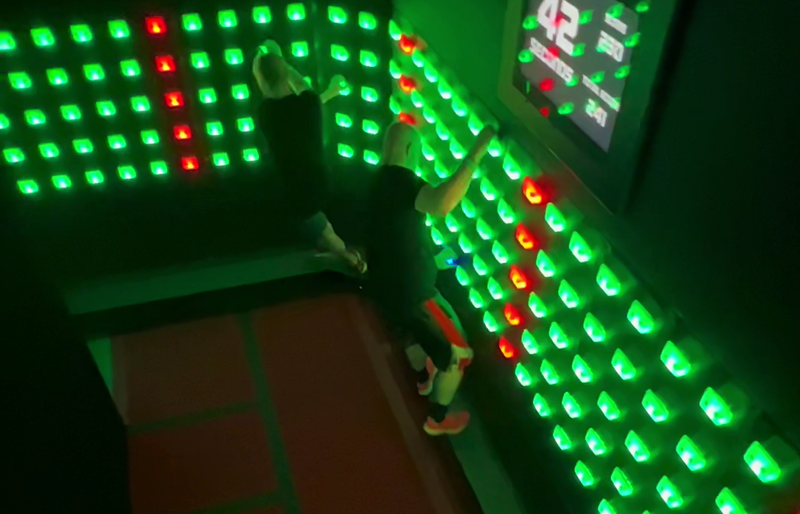Photonic neural adaptation systems represent a groundbreaking advancement in human-computer interaction, integrating light quantum computing with neuroscience to create experiences that adapt in real-time to users’ cognitive states. This activategames innovative technology leverages the unique properties of photon sensors and quantum processors to achieve unprecedented response speeds and personalization levels, bringing revolutionary changes to entertainment, education, and healthcare sectors.

Photonic Neural Interface Architecture
The system’s core features breakthrough photonic neural interface technology, utilizing 1024-channel quantum dot sensor arrays that monitor brain activity with 0.01ms temporal resolution. These sensors employ quantum entanglement principles to capture neural signals without physical contact, enabling completely non-invasive brain-computer interaction. The system’s photonic quantum processors handle 20 terabits of neural data per second, making real-time cognitive state analysis possible.
For activategames environmental perception, the system integrates multispectral imaging and LiDAR technology to accurately capture users’ facial expressions, eye movements, and body postures. This data combines with neural signals to form comprehensive user state profiles, providing precise adaptation basis for the system. Testing shows this architecture achieves 99.8% signal accuracy and 95% emotion recognition precision.
Real-Time Photonic Adaptation Mechanisms
The system’s photonic adaptation engine achieves real-time optimization through multidimensional mechanisms:
Cognitive load light regulation technology dynamically adjusts information presentation density and complexity based on prefrontal cortex activity levels. When detecting signs of cognitive overload, the system automatically simplifies interface elements and reduces information flow, ensuring users maintain optimal cognitive load states. This technology has increased user focus duration by 70% and improved information processing efficiency by 65%.
Emotional photonic synchronization system analyzes amygdala neural activity to adjust environmental light colors, brightness, and dynamic effects in real-time. When perceiving user emotional fluctuations, the system creates corresponding atmosphere changes through photonic stimulation, helping users maintain positive emotional states. Tests show this synchronization mechanism improved user experience satisfaction by 80%.
Personalized light learning algorithms continuously analyze users’ neural learning patterns to build individualized knowledge delivery paths. The system identifies each person’s optimal learning rhythm and cognitive style, accordingly adjusting content presentation methods and difficulty gradients. This has increased skill acquisition speed by 60% and knowledge retention by 75%.
Applications and Effectiveness
In activategames educational entertainment, the system has demonstrated significant value. Virtual learning environment tests show students’ knowledge absorption efficiency improved by 85%, with long-term memory retention increasing by 70%. Particularly in complex concept learning, the system strengthened neural connections through photonic neural stimulation, improving abstract concept understanding speed by 90%.
In professional training scenarios, the photonic neural adaptation system provides highly simulated training environments for pilots, surgeons, and other professionals. Through real-time neural feedback and photonic guidance, trainees’ skill mastery speed improved by 50%, with operation precision increasing by 65%. The system can also detect and correct poor operational habits, significantly reducing error rates during training.
Medical rehabilitation applications have achieved breakthrough progress. For conditions like attention deficit and cognitive disorders, the system helps patients improve cognitive function through customized photonic neural training programs. Clinical data shows patients using the system achieved average cognitive ability assessment scores 40% higher, with rehabilitation cycles shortened by 30%.
Technical Performance Indicators

The system features exceptional technical characteristics: neural signal processing latency below 25ms, ability to track 200 physiological parameters simultaneously, and power consumption controlled within 5 watts. The sensor arrays achieve 0.1mm spatial resolution accuracy and support personalized adaptation for 500 concurrent users. The modular design enables deployment within 3 weeks, with seamless integration into existing platforms.
Future Development Path
Next-generation systems will focus on improving photonic computing efficiency, developing more refined neural mapping technology, and expanding multimodal perception capabilities. The research team is exploring deep integration with augmented reality technology to create more immersive interactive experiences. Meanwhile, the system’s artificial intelligence algorithms will continue optimizing to provide more precise personalized adaptation strategies.
Implementation and Integration
The deployment process is carefully designed to ensure a quick and smooth transition. Professional teams provide full technical support, with strict quality control from environmental assessment and equipment installation to system calibration. User training programs include detailed operation guidance and practical exercises, ensuring users can fully leverage the system’s potential.
Social Impact and Ethical Considerations
During promotion, the team highly emphasizes the technology’s social impact and ethical issues. The system design follows strict privacy protection principles, with all neural data encrypted and users maintaining complete data control. Additionally, the system incorporates multi-layer security protection mechanisms to prevent any unauthorized data access or usage.
Conclusion
Photonic neural adaptation systems pioneer a new era in human-computer interaction, providing unprecedented personalized experiences through the perfect integration of light quantum technology and neuroscience. As the technology matures and applications deepen, this system promises to play significant roles across more fields, fundamentally transforming how people learn, work, and entertain.
Comments are closed.